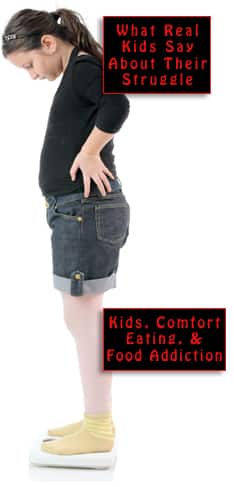
Previously, Childhood Obesity News talked about what Dr. Pretlow terms the childhood obesity perfect storm, the collection of factors present in our society that combine in endlessly fascinating ways to keep the obesity epidemic going. Like a mythological hero, we get busy slicing off one of the dragon’s heads, and meanwhile, like a mythological monster, it is busy growing another one.
Yesterday, we considered the idea that for any particular person battling obesity, several different factors are at work. Add emotional distress to some particular life circumstance like living upstairs from a bakery, and with only those two factors a child can start down the path of lifelong medical problems caused by excess weight.
Who needs another wild card factor entering the picture? We compared the dilemma to a gnarly ball of string, which applies to both society as a whole, and the individual. The fewer the strands tangled up in there, the better.
Is BFRB a strand?
Childhood Obesity News has discussed Body-Focused Repetitive Behaviors (BFRBs) before, in reference to the 2013 European Congress on Obesity, where Dr. Pretlow gave a presentation titled “Compulsive Eating/Addiction Intervention for Obesity Implemented as a Smartphone App: A Pilot Study.” BFRB is a catch-all category for several manifestations of the inability to exert impulse control.
Mainly, the professionals who deal with this are talking about trichotillomania — compulsive hair pulling and skin picking. Some include nail-biting and other less frequently seen behaviors. According to Visions Adolescent Treatment Centers:
For some, the picking or pulling will occur during sedentary activities like watching TV, reading, driving or being a passenger in a car, talking on the phone, sitting in class, or sitting at a computer or a desk.
The interesting thing here is that compulsive eating takes place under the same circumstances. How easy it is to fall into a TV trance and slouch there for an hour, with the hand moving compulsively to and from a bag of chips, carrying a portion of pseudo-food each time from its source to the mouth, over and over again.
Is it repetitive? Yes. Is it body-focused? Yes. People eat while they read, when in a car, while working at the computer. Visions Adolescent Treatment Centers also says:
At times, there might be focused intent which drives the behavior — for example, planning on picking or pulling at an area as soon as one arrives home.
Doesn’t that sound just like a person with an uncontrollable eating habit, maneuvering through the last stages of the trip home from work with a vision of sugar plums, or of the carton of bacon-pineapple ice cream waiting in the freezer, just fantasizing about how soothing it will be to kick the shoes off and get out the ice-cream scoop? They go on to say:
At other times, it happens without conscious awareness, and the individual only realizes they’ve picked or pulled when they see the resulting pile of hair, open scabs or bleeding fingers.
How many teenagers wake up in the morning to find the floor littered with packaging peeled from snacks they don’t even remember consuming, and guiltily kick the whole mess under the bed? These therapists also note that BFRBs are related to Obsessive-Compulsive Disorder, a distracting condition that forces people to count items and actions, and to feel that the universe makes strict demands about the certain ways in which things must be done.
When combined with the tendency to get hooked on food, who knows what bizarre tics could be affecting people? Maybe cookies can only be eaten in multiples of four, so the idea of stopping after five or six cookies is literally unimaginable, and the victim must continue and eat eight. Maybe the dinner plate always has to be scraped clean, to avoid some terrible sensation of impending cosmic doom. Maybe an ironclad inner rule forbids leftovers, so any package of food, once opened, must be finished.
(To be continued…)
Your responses and feedback are welcome!
Source: “Body-Focused Repetitive Disorders,” Visionsteen.com, 03/29/12
Image by Aristocrats-hat.

 FAQs and Media Requests:
FAQs and Media Requests: 












4 Responses
This is accurate to the letter. I stumbled upon this article a few hours after a binge-episode. What do you know – I’d been picking my head/face as I was reading, semi-consciously. I’m thinking the stress leading to the compulsive acts comes from excessive energy input/minimal output (the impulsive behaviors act as an attempt by our bodies to expend the excess energy…this is why exercise has the effect of calming the impulses). The dieting, binge/restriction cycle, obesity, etc is a symptom of a disconnect from our internal hunger cues.
Let me know what you think,
Josh
Josh, I feel your pain and frustration. Fortunately, there are methods that help BRFB’s, which work equally well for compulsive overeating. You are correct that, like BRFB’s, compulsive eating involves the expenditure of nervous energy, but also accomplishes displacement/distraction from the stress. Internal hunger cues are completely overridden by the urgent need to cope with the stress. Squeezing your hands together and taking a deep breath, holding it for a sec, and letting it out helps to expend the nervous energy. Letting the urge to binge come over you like a wave, but relaxing, “surfing” the urge, not acting on it, and distracting yourself can help avoid bingeing. Writing down your stresses and a plan to deal with each stress also helps. Plus, stay out of the kitchen, call a friend, or go dance it off. – Robert Pretlow, MD
Thank you sir. Much appreciated